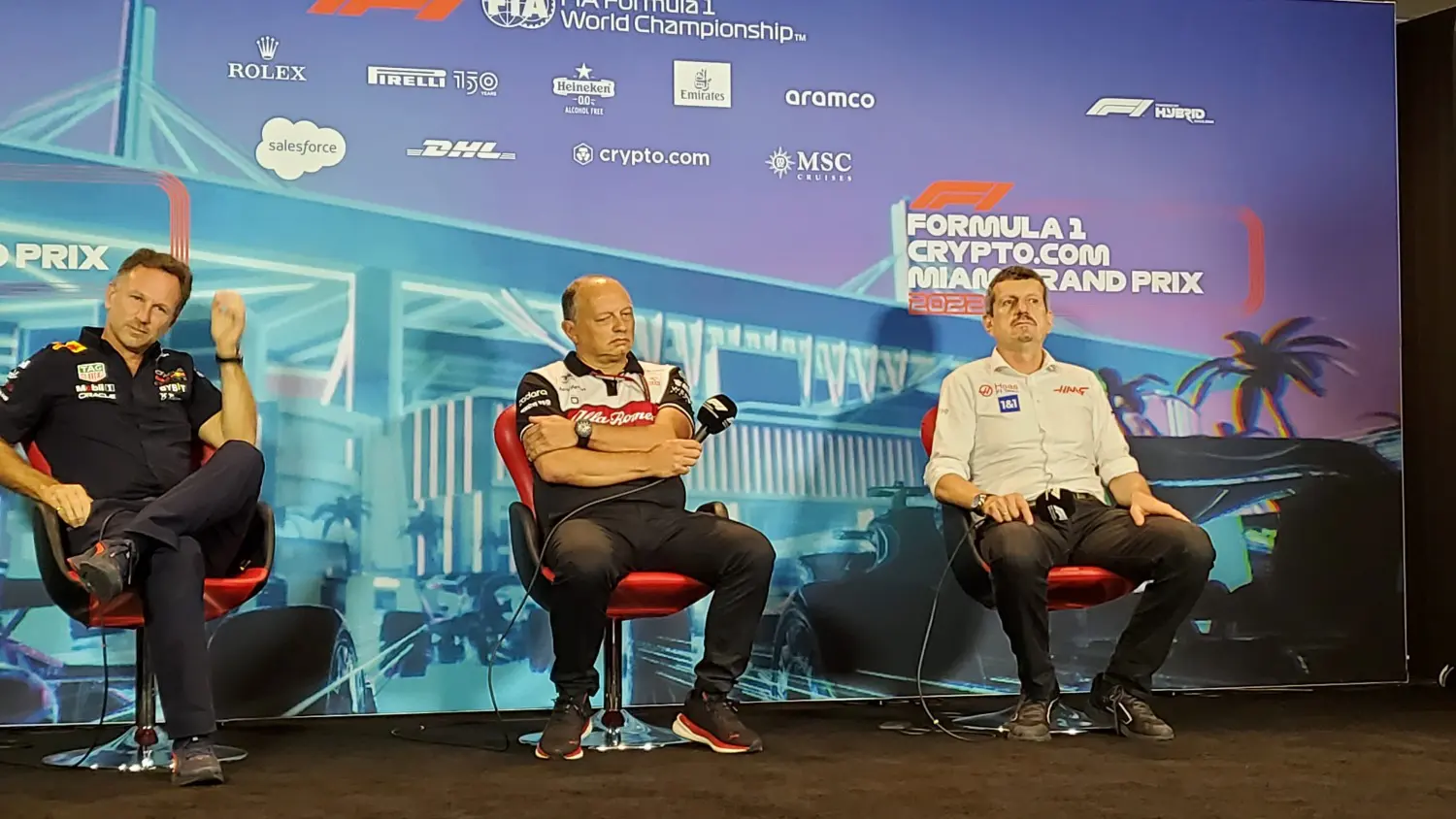A Delicate Balance Awaits Teams Heading into Qualifying | Hitting the Apex
There is a cliche in all motorsports, that in particular applies to Formula 1.
To finish first, you first must finish.
The new track at the Miami Grand Prix was described as “challenging” by several drivers.
Through 3 practice sessions, that has proven to be the case with each session disrupted by red flags, crashes, and spins.
McLaren CEO Zak Brown called it a “proper” track and it surely is that.
And it is that properness coupled with the strange asphalt and new layout that is testing these drivers to the limits, and in several cases, over the limits.
Track Evolution
As a Grand Prix weekend goes on, especially on a new track, lap times drop.
This is because the track goes through a process called “rubbering in” where the tires, as part of the process of wearing out, leave rubber on the track. That rubber then allows the track to have more grip. By the time you get to qualifying and certainly the race, the rubber laid down on the racing line over the weekend is actually more important to grip than the actual surface itself.
And therein lies the conundrum.
As the track evolves, and the lap times drop, the best time quickly becomes the worst time.
Ideally, you will put in your competitive qualifying laps just as the checkered flag is being waved, maximizing the grip.
The problem with that?
Rules state that you must start a “flying” (aka qualifying) lap before the checkered flag waves. And in order to do that, you must do an “out lap,” which is the lap from the pit box around the track to the start-finish line.
But an out lap is not just simply about driving around to the start-finish line. It is a tedious process of slowly warming up the cars tires, and creating the optimal gap between your car and the car in front of you so you are not impacted by disturbed air. And it can take several minutes, when done properly, to get the car is in the “zone” at the start-finish line, with optimal tire temperature and clear air in front.
Delicate Dance
The problem at a new track, especially a challenging one, is the complexity around the question of when to send the cars out for hot laps is increased exponentially.
The track evolution on a new track is much higher than on an old, rubbered in track, so there is not really an option to “bank” an early fast lap and think it will hold up.
But with repeated offs and red flags over the 3 practice sessions, a team cannot be comfortable leaving the lap until the end. While a red flag would stop the qualifying clock (unlike in practice, where it keeps running), if there is not enough time to drive a proper out lap and get to the start-finish line prior to the checkered flag after the session resumes, the clock stoppage won’t matter.
And even something as simple as a slight off from a competitor causing a yellow flag will force a driver to have to abandon his lap.
The start-stop nature of all 3 practices would lend itself to a continuation of that in qualifying. And those practice disruptions impacted the team’s setup programs already, with 3 drivers having lead the 3 practice sessions.
Whoever sends their cars out at the right time, whether via skill or luck, may end up leading the cars away in the race tomorrow.
A fascinating qualifying awaits in Miami, and anything can happen.
Vishnu Parasuraman is a contributor for @FiveReasonsSports. He covers the Miami Hurricanes for Sixth Ring Canes and Formula 1 for Hitting the Apex. You can follow him on twitter @vrp2003



Leave a Reply
Want to join the discussion?Feel free to contribute!